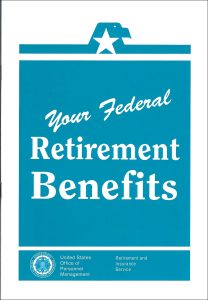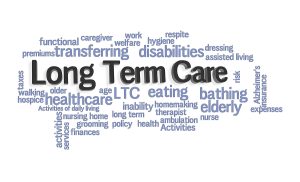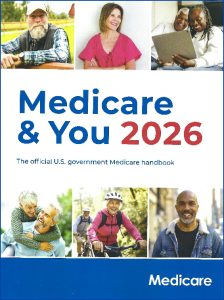Posted on Thursday, 15th January 2026 by Dennis Damp
 Print This Post
Print This Post
When inflation raised its ugly head in May of 2022, I-Savings bonds were paying 9.62%. Many purchased these bonds to partially offset the near-zero interest rates they earned on their fixed income over the past decade. It is easy to set up an account, and currently, the I-Bond yield is 4.03%, including a .90% fixed rate, not bad overall.
I’ve written articles discussing Treasury Direct offerings, including their savings bond calculator. The more I deal with them, the more discouraged I am by their inability to provide efficient investment services to retail investors. DOGE would have had a field day with this organization.
Actually, they operate more like a third-world bank when dealing with their retail investors. I’m talking about private citizens who purchase Savings Bonds, Treasury Bills, Notes, and Bonds directly from the Treasury.
I can’t imagine large financial institutions that purchase billions of dollars in Treasury instruments have to deal with what we do every time we go online. If you have to modify an account or ask questions about our Treasury investments, expect delays of up to a year or longer in some cases.
The Savings Bond Calculator Fiasco

I use the savings bond calculator to determine the previous month’s gains and total market value. Savings Bonds mature after 30 years, and from that time on, you aren’t earning interest. If you don’t cash them in, their value slowly evaporates as inflation keeps gaining ground each and every year.
This isn’t a problem with the electronic savings bonds that you purchase online, which remains in your Treasury Direct account. They are automatically redeemed at maturity, and the cash is deposited into your designated bank account.
This Calculator is advertised to be used only with paper savings bonds; there are ways to work around this. I’ve used this application for probably 20 years or longer. The calculator software is outdated and can be difficult to use, and when you sell or buy new bonds, the process for saving the modified bond inventory is unreliable and difficult to follow. I must admit that it was accurate to the penny when I cashed in 18 matured bonds recently.
After removing the 30-year-old bonds from my Savings Bond Calculator last week It took half a day to determine how to restore the calculator’s functions. I had to open the program’s code in Notepad and modify it to get it to work properly. More on this later.
Who’s on First and Whats on Second! (Abbot and Costello)
I believe the U.S. Treasury is the world’s largest financial institution. You would expect their website for retail investors to be intuitive, easy to use, and provide the services we expect from other financial institutions. Their system is extremely outdated and certainly not user-friendly. Here are several major issues that retail investors must deal with on a daily basis:
- Treasury Direct doesn’t generate monthly or quarterly statements for its customers! They advise you to print your computer screen and keep the printout for your records. The same applies to bond purchases and sales. This is the only documentation that you have if their software or database is corrupted.
- Many financial institutions no longer redeem paper savings bonds, and the ones that do require you to have an account with them. If you can’t find a bank or credit union in your area, you must send your Savings Bonds to the Treasury for redemption. This can take months and requires you to fill out forms with your submission and obtain signature verification.
- Their website, TreasuryDirect.gov, is archaic. For example, to go back to the previous page, you must use the back button in the program. If you use the computer’s back arrow, you log out of the system.
- Simple functions like transferring savings bonds from one Treasury Direct account to another take months or longer to accomplish! So much for operational efficiency.
- I called their customer service to find out if one of my bonds was redeemed. I had the serial number and purchase date. You would think they could call up their bond database and find this information. They can’t; you have to submit a form, have it notarized, and wait months or longer for a reply!
In February of 2025, I sent a request to the Treasury to transfer all of the online I-Bonds and TIPs in my personal account to the joint trust account that we created for estate-planning purposes. I called several times over the past year to check on the status of my request. Last week, they advised me that the case still has not been assigned. The customer service representative said he couldn’t expedite this and that anytime they deal with trusts, it takes over a year to finalize the request.
When I transferred our personal accounts to a joint trust account at my local PNC branch, it took 1 week to complete. Either the Treasury is woefully understaffed, or their automation systems haven’t been updated this century. I can imagine a little of both, and the staff appears complacent and unable to provide the information and speedy services their clients deserve.
After you remove any cashed-in savings bonds or add new bonds to the calculator, you have to save the file by clicking the blue “Save” button in the results area. You must follow the save file guidance provided by the Treasury to save the file using only a limited number of browsers. I use the Firefox browser. Once you save the file by following their detailed instructions, the new revised list of bonds is available.
Unfortunately, nothing happened when I clicked on the “RETURN TO SAVINGS BOND CALCULATOR” button. The form action wasn’t functioning. I right-clicked on the calculator Firefox icon, selected “open with,” and then selected Notepad.
Towards the top of the page, find “<!– BEGIN CONTENT –>.” Just beyond this, locate:
<form method=”post”> This was all I had on my screen; it was missing the return “action” directions as noted below. If your program doesn’t present as shown below, replace the above code with the following line to fix the problem.
<form method=”post” action=”https://treasurydirect.gov/BC/SBCPrice”>
After making this change, I was able to return to the calculator’s main screen by clicking on “RETURN TO SAVINGS BOND CALCULATOR.” However, every time you either redeem or buy savings bonds you will have to add the expanded code above until the Treasury fixes the problem! Print a copy of this article and keep it with your Savings Bond file for easy reference the next time you make a change to your savings bond calculator.
Their Savings Bond Calculator is due for a major overhaul to make it compatible with the Chrome and Microsoft Edge browsers and to simplify its operation.
$200K Salaries and National Impact:
Why the New U.S. Tech Force Is a Boost for Technologists
Conclusion
These types of issues are systemic in government, and many agencies are actively updating their operations, systems, and websites. I would only hope that the largest financial entity in the world would be doing the same; making our lives just a little easier while providing investors with the essential services they need to manage their lives and accounts.
I mentioned that the savings bond calculator can be used to track your online savings bonds with a minor adjustment. The calculator only accepts bonds up to $5,000. If you purchase bonds online for $10,000, divide that by two and manually enter two $5,000 bond entries. I use the online bond identifier, such as IAAAB, and convert it to IAAAB-1 and -2 (two separate entries). The desktop calculator uses the issue date and denomination to calculate the interest.
I don’t believe Treasury Secretary Scott Bessent is aware of these issues, focusing on trade negotiations and major economic and fiscal policy matters. If someone from the Treasury is reading my column, please forward this article to the Secretary’s staff. The American public deserves the same level of service from Treasury Direct as from all other financial institutions.
Helpful Retirement Planning Tools
- Financial Planning Guide for Federal Employees and Annuitants
- TSP Guide
- (NEW) Free Retirement Planning Consultation
- Budget Worksheet
- Retirement Planning for Federal Employees & Annuitants
- The Ultimate Retirement Planning Guide – Start Now
- Deciding When To Retire – A 7-Step Guide
- 2026 Federal Employee’s Leave Chart
- Medicare Guide
- Social Security Guide

The information contained herein may not be suitable for your situation. This service is not affiliated with OPM or any federal entity. You should consult a financial, medical, or human resource professional where appropriate. Neither the publisher nor the author shall be liable for any loss or other commercial damages, including but not limited to special, incidental, consequential, or other damages.
Tags: Daily Brief, Savings Bond Calculator, Savings Bond Calculator Problems, Treasury Direct, Treasury Direct Problems
Posted in ESTATE PLANNING, FINANCE / TIP, LIFESTYLE / TRAVEL, RETIREMENT CONCERNS, SURVIVOR INFORMATION
Comments (0)|  Print This Post
Print This Post








